- 01 Feb 2024
- Print
- PDF
Tabular Chart Settings
- Updated on 01 Feb 2024
- Print
- PDF
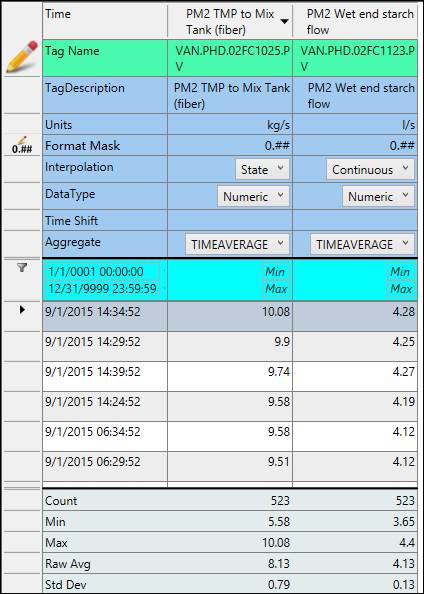
Tag Info
The following rows will appear if Tag Info/Aggregate is enabled.
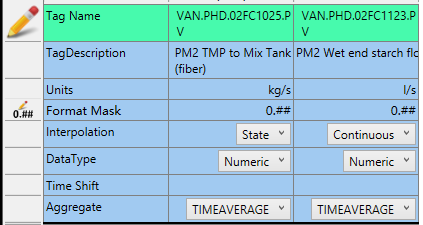
Tag Name: The full UTag name.
Tag Description: A description of the tag. The description will appear as the heading of the column.
Units: The units for the values of the tags. The tag’s units will only appear in this cell and not on the entries.
Format Mask: How the entry values will appear in the chart. Add the units in this section to have them appear in the chart.
Interpolation: When interpolating data, how the data between actual points is calculated.
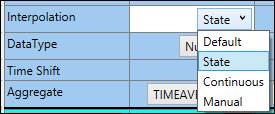
Default: Use tag’s native interpolation mode.
State: The last value of the tag is held until a new data point occurs.
Continuous: Linearly interpolates the values between points.
Manual: Hold previous value at timestamps between raw points, and interpolate to this tag’s timestamps when Normalization mode is To Manual.
Data Type: The type of data in the tag.

Type Unknown
Numeric
Text
Time Shift: Shifts a tag’s values forward or backward in time. Enter a value for the time shift as a function of (S), minutes (M), hours (H), or days (D). For example, a time shift of -5M will shift a tag’s values backwards five minutes at every timestamp.
Aggregate: The Aggregate setting determines what type of value is calculated for each timestamp generated by the Run Browser’s Normalization setting. Aggregates are calculated over the interval between timestamps, including raw points that occur at the start time of the interval but not including raw points that occur at the end time of the interval.
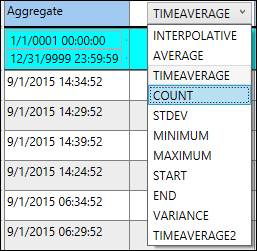
Interpolative: Linearly interpolate between the raw points that bound the timestamp.
Average: The raw average over the interval.
Time Average: The time-weighted average between the shown timestamp and the next.
Count: The number of raw points within the interval.
Standard Deviation: The standard deviation of the raw points within the interval.
Minimum: The minimum raw value within the interval.
Maximum: The maximum raw value within the interval.
Start: The first raw value within the interval.
End: The last raw value within the interval.
Variance: The square of the standard deviation.
Time Average 2: Same as Time Average but removes bad quality time from the average.
Filter
A filter can be applied to the chart after the Run Browser loads the data.
Time Filter: Filters the chart based on a Start Time and End Time. This filter applies after any filter from the Run Browser.
Min/Max: Removes values less than the specified minimum and/or greater than the specified maximum.
Entries
Each entry will be an aggregated value for the given timestamp.
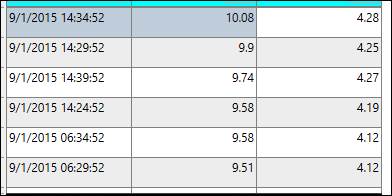
Statistics
Total aggregates for the data in the chart are shown.


